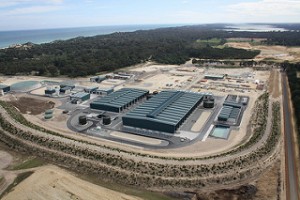

Photo by National Centre of Excellence in Desalination licensed under CC BY 2.0.
More than $58 billion is expected to be invested globally in water projects financed through public-private partnerships (P3s) by 2020, according to a report released this week by Bluefield Research. And the number of projects will likely triple.
There are a multitude of reasons why water P3s are on the rise around the globe. More people mean more demand. And more demand means strain on existing water and wastewater facilities and the need for construction of more new facilities. With governments around the world facing budget constraints, many are turning to the capital-rich private sector to help deal with water infrastructure deficits.
From 2010 to 2015, according to Bluefield analysis, the water treatment capacity around the world was 6 million cubic meters per day. With the projected increase from 2016 to 2020, an additional 16 million cubic meters per day would be added. And the largest portion of the forecast of $58 billion in new projects – 80 percent – will be invested in new seawater desalination and wastewater treatment plants.
While some of the projected growth will come in well-established markets or in markets where projects have stalled, the growth in the United States is expected to be mostly in new markets that are opening up.
Regarding the municipal marketplace, a Bluefield analyst said municipalities have neither the funds nor the operational expertise that the private sector can provide for these multi-million-dollar projects. At a higher level, federal governments are hoping to attract private-sector investments in water-related projects with new P3 laws and contracts that are more attractive to private investment yet provide long-term control over assets.
This projected increase over the next five years will have a significant impact on water P3s in the United States. Private-sector firms interested in investing in large water and wastewater projects will likely find willing public-sector partners in the future. And as water supplies continue to shrink, public-sector officials will be taking a long, hard look at desalination plants and other water resource solutions. Watch this marketplace closely – it’s ready to explode.
